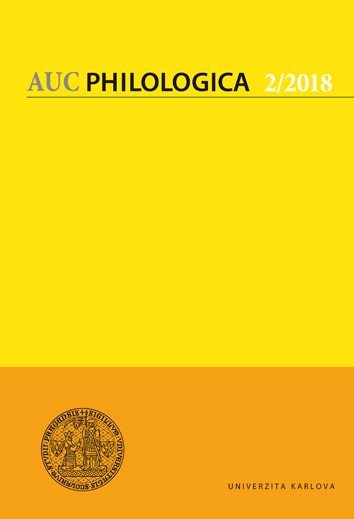Hermeneutické čtení děl Jiřího Levého
Hermeneutic Reading of the Works of Jiří Levý
Author(s): Tomáš SvobodaSubject(s): Language and Literature Studies, Translation Studies
Published by: Univerzita Karlova v Praze, Nakladatelství Karolinum
Keywords: Jiří Levý; Translation Studies; metatheory of Translation Studies; Hermeneutics; Prague Structuralism; Interpretation of a work of art; Subjectivism
Summary/Abstract: At first glance, the work of Jiři Levy shows many similarities with the thoughts and concepts of the (neo)hermeneutic approach within Translation Studies (TS). This observation is shared by many and it became part of the scientific discourse. At second glance, however, a number of discrepancies between the two approaches become apparent, some of which are substantial. Obviously, Jiři Levy himself cannot be regarded a member of the neohermeneutic branch of TS for the reasons of chronology, since he died some 10 years prior to the establishment of this branch, which took place in the late 1970s and early 1980s. When comparing his concepts with those of the hermeneutic approach, the following picture emerges: There are instances of perfectly matching concepts, there are those of profound mismatch, and, eventually a grey area in between. Apart from the specific methodological feature, where the two approaches (the one of Levy and that of Hermeneutics) both use extensive examples to illustrate theoretical stances, there are Translation Studies and Literary Theory terms and concepts, the meaning of which they share. These terms and concepts are the following: the text’s value, which surpasses the simple addition of its discrete parts, Levy’s idea of perception on the one hand and the hermeneutical circle on the other, creativity and other rqualities required on the part of the translator, equality of the aesthetic effect. The two approaches also tend to show a partial overlap, when it comes to the applicability of translation theory, the language and style of theoretical works, the focus on the individual (recipient, translator), etc. Yet, there are differences, too, especially in the thematic focus (Hermeneutics covers both literary and non-literary translation, whereas Levy focuses solely on literary translation) as well as the method of enquiry in general: Levy (at least in The Art of Translation) did not subscribe to idealism as part of his scientific method, which he wanted to be exact and undisputable. Other discrepancies involve some of the TS concepts in Levy’s works. One would hardly find the idea of a personal link between text and its recipient, which is typical for Hermeneutics, the concept of interpretation is different, as is that of subjectivity. At the same time, there are some aspects of a potential overlap between the two approaches (e.g. non-rational and subjective aspects of the literary/ translation process), which Levy reflected upon, but refused to consider in detail, since, at his time, science lacked exact methods to study the phenomena. To sum up, Levy’s work can of course be subject to ‘hermeneutic reading’. However, rather than a (direct) predecessor, Jiři Levy himself can be regarded as a precursor of the hermeneutic motion in Translation Studies. Nevertheless, his theory continues to be inspiring in its openness and dynamism.
Journal: Acta Universitatis Carolinae Philologica
- Issue Year: 2018
- Issue No: 2
- Page Range: 21-41
- Page Count: 21
- Language: Czech

